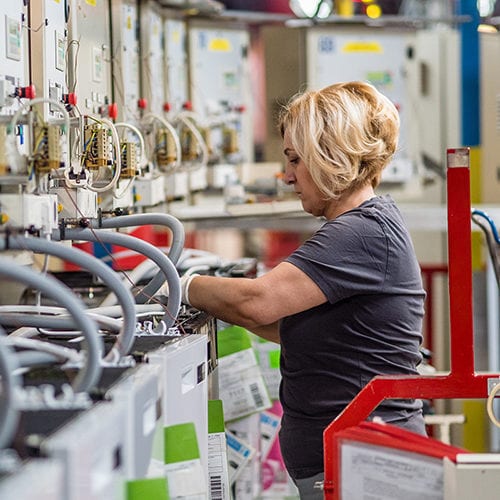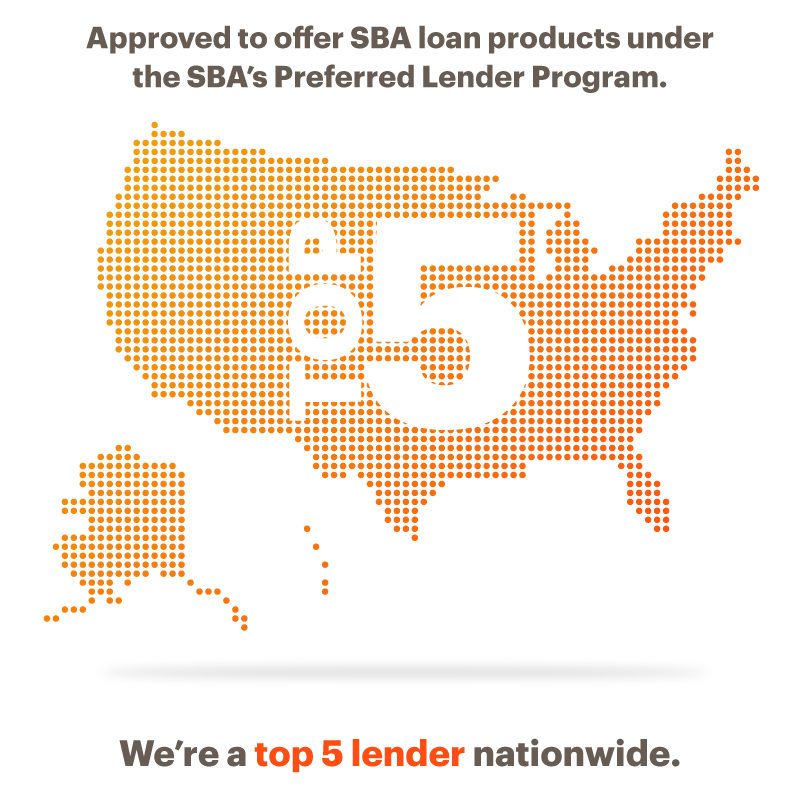Small business loans for life-changing impact
Join thousands of other business owners nationwide who have trusted us—a top five SBA lender—to help them get their share of the American dream.

With over 30 lenders located across 12 states, we’ve helped business owners across the country through every step of the U.S. Small Business Administration (SBA) loan journey.
Our Business Banking team provides financing options under $350,000 in Illinois, Southeast Wisconsin and Northwest Indiana.
We offer SBA loans starting at $350,000 for businesses across the U.S.

Designated as a Preferred Lending Program (PLP) lender by the U.S. Small Business Administration, we have the authority to make credit decisions in-house, which means you:
Whether it’s putting together a creative loan structure or advocating on your behalf, our experienced team can make the difference.
Whether you’re growing a business, buying an existing or just starting out, find out if SBA loans are right for you.
Whether you’re acquiring another agency or upgrading technology, we know how to underwrite an independent insurance agency’s cash flow-based business.

Plan for growth, consolidate debt and meet every need in between. Our SBA loans for investment advisors offer flexible requirements and quick approvals.
Acquire, build, renovate or refinance your senior housing community with flexible financing and longer terms from a specialized lending team.
Purchase your next business with up to 90% financing from an experienced team that knows how to help self-funded entrepreneurs close fast.
A leader in SBA lending to independent pharmacies, we offer cash flow and liquidity solutions with creative loan structures and flexible terms.

Grow your home care, home health care or hospice services with a lender that understands how to support the needs of in-home care businesses.
Acquire or expand an independent hardware store with SBA financing for your equipment, real estate and other business needs.
Whether you’re a first-time or seasoned owner, our experienced SBA lenders can help you start or grow your mortuary business.
Going into this I knew nothing about the SBA process at all. It was all new to me. I was turned down by other banks and told I had one of the most challenging loans they’ve ever seen. I can’t speak highly enough about Byline. They’re so good at SBA loans—they’re rock stars! I don’t know anyone better to work with and I’ll keep using them forever.
A lot of banks say they work with SBA loans, but only a few that really get SBA loans.
The level of personalization at Byline sets them apart. From their organization to the way they communicate and ensure there is one person to walk you through it all has been very helpful.

Lake Elsinore, CA
Construction and Permanent Financing

Westfield, IN
Refinance

Tuscan, SC
Business Acquisition

Northbrook, IL
Business Acquisition
Byline Bank is a full-service commercial bank with approximately $8.9 billion in assets, serving small businesses, mid-market companies, and consumers.
Operating over 40 branch locations throughout the Chicago and Milwaukee metro areas, Byline’s been a community partner in its neighborhoods for over 100 years.
In addition to being a Top 5 SBA lender in the nation*, Byline offers a competitive range of commercial lending products backed by experts with decades of experience in the industry.
*National ranking: Ranked by the U.S. Small Business Administration by volume FY2023